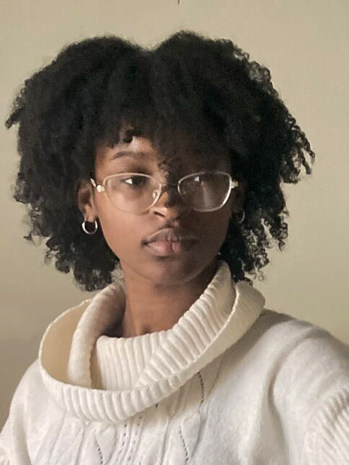by Kimora Brown
Since starting this school year I’ve seen seven dead armadillos. All on the same road, minimal space in between each of the rotting carcasses. If one corpse gets removed, it is promptly replaced by another, each more mangled than the other. You’ll know when they are there, even if you can’t see them, because the foul stench hits your nostrils so fast you have no time to react. The only thing you can do is turn your nose up at the pungent smell of their tiny decaying bodies.
Walking home from school I saw another dead armadillo as usual – its body smeared on the road and its fluids seeping in and intertwining with the asphalt. I quickly turned my head away and moved inward on the sidewalk, feeling the recently deceased serve as a premonition. I continued walking, my feet aching and dipping into cracks in the pavement. Eventually, I got to an intersection on the road: it had no crosswalk, no illuminated white man to usher me to safety. Regardless I continued, without security and the phantoms of the fallen following me closely. Cautiously I crossed, wary that the killer of the shelled victims may come for me next; but escape was futile, I was already in its den.
Who is South Carolina built for? The obvious answer should be humans because undoubtedly the state was formed for us, by us. But what about here and now? When I look outside what I see isn’t built for human convenience, it’s a playground for metallic husks, stretching on for miles. Black tar painted across the ground, exclusively meant for vehicles only accommodating one person, vehicles that aren’t serving the public, vehicles that aren’t serving our community. We are southern, praised for hospitality, yet we let roads drive cracks into our humanity.
Like the armadillos and every other being of nature, I use my feet to commute where I need to go. Yet it somehow seems primitive: how often do you really see people walking around South Carolina? The people I see walking, despite our population increasing, get sparser by the year. The simple act is met with ostracizing glances, people evaluating your social standing because you are walking in an environment clearly not meant to be traversed by foot, and no person with the means to afford a car would willingly cross this landscape. Walking, an action so natural, a milestone of human development, and the means of transport for virtually every species on Earth, is barbaric.
Craters have formed in the sidewalks, and no one is coming to repair them. Highways continue to extend longer, but the footpaths to accompany them are few and far between.
Isolation is normal; five miles turn into five hundred, everything an expedition. Experiences pass by as you are entrapped by the black web surrounding you on all sides: homecoming, outings, mere club meetings; you watch as they all slip out of your reach while you sit and decay as the armadillos do, your main source of vitality cut off. Unable to escape, your friends slowly become strangers, strangers that live within twenty miles of you. This infrastructure is lonely and damaging for all within it.
Often, I find myself fantasizing about living in Switzerland. It’s everything I yearn for: beautiful, walkable, many ways of public transit. Even with urbanization, it doesn’t feel suffocating. Flora and fauna thrive, living in harmony with humans. I often thought to myself, “Why can’t we be more like them?” But the answer doesn’t lie within Switzerland or any other country or state, it lies within South Carolina.
When people think of South Carolina what do they picture? It isn’t a desolate landscape hued in various shades of brown, the only other color being the gray blanket of petroleum covering the ground; nor is it the rotting corpses of animals that once peacefully lived beside us. When people envision South Carolina, they see Charleston: parks that seamlessly blend nature into the city, buses that welcome you to climb aboard, centers gathering everyone in the community, the connection. It’s stunning; every time I go, I drag my feet trying to stall and stay there forever. Charleston is radiant, as radiant as any foreign country or city: people gather from all around the globe just to see it. We already know what we love about our state, what everyone loves about it, so why not embrace it, spread it?
I wish South Carolina would remember what makes it beautiful.

About Kimora Brown
Kimora Brown is a junior at Berkeley Middle College in Moncks Corner, where Dr. Nicholle Arman is her English 101 teacher. The daughter of Karen Williamson, Kimora plans to major in chemical engineering and work in one of its sustainability subfields.
Kimora Brown on Instagram.